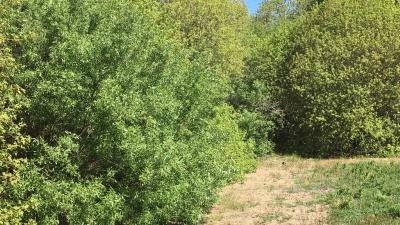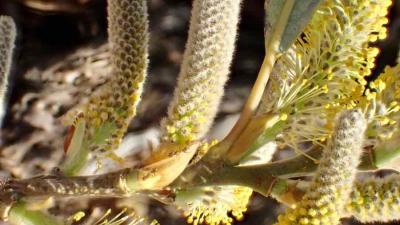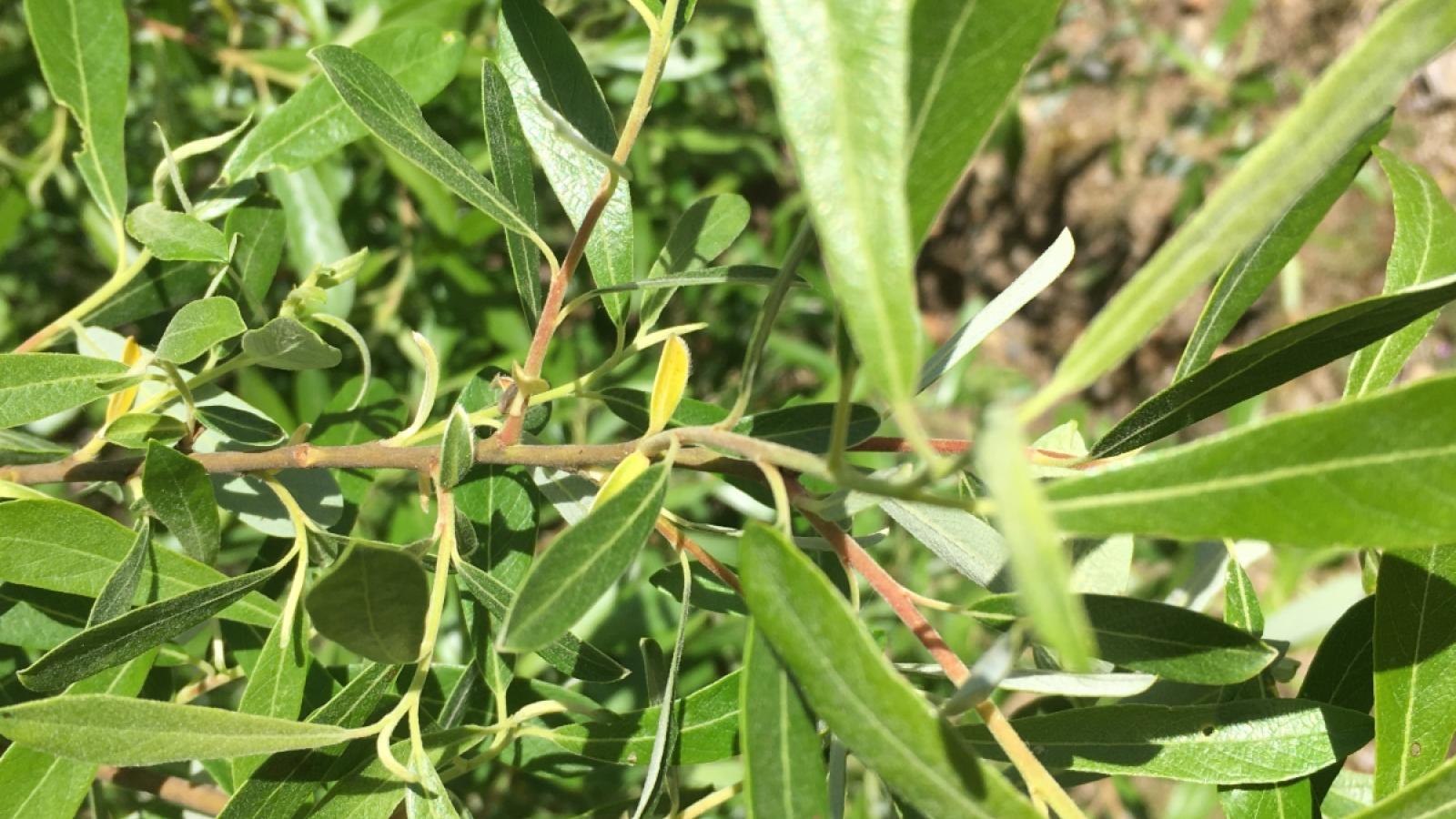Willow (genus Salix) is a group of large, deciduous shrubs or small, multi-trunked trees commonly found in riparian zones in canyons and valleys, along pond shores and in wetlands and marshes. It is found in many ecosystems, including chaparral, oak woodland, mixed evergreen forest, coast redwood forest and more. There are approximately 20 native willow species in California, including arroyo willows (Salix lasiolepis), commonly found growing along stream edges, and Brewer’s willow (Salix breweri), a species endemic to California and found only in the serpentine soils of the Coast Ranges.

Willows are very important to wildlife, providing shelter and food sources for birds, insects, amphibians and small mammals. Insects that use willows as their habitat in turn create excellent food sources for insect-eating birds. Catkins (flower clusters) provide early-season nectar and pollen supplies for pollinators while beavers and deer feed on willow leaves and bark.
Willows play a key role in erosion control in riparian habitats. Their extensive root systems stabilize the banks of streams and rivers and bind to soil particles, reducing sediment runoff. During heavy rains, willows can mitigate flooding and increase climate resilience by absorbing excess water. Riparian willows also act as natural filters, absorbing excess nutrients and pollutants from water. Though willows can survive short droughts they need a consistent source of fresh water to thrive.

Willow is famously known as a traditional medicinal plant used by people Indigenous to California. Willow bark contains salicylic acid, which was the original source for aspirin. Infusions using the leaves, bark or flowers were used for various remedies - usually brewed into a tea to reduce pain and fever. Willows were also important to Indigenous communities because they indicated a source of fresh water. Additionally, the branches were used to build homes, while the shoots, bark and roots were used for basket weaving. The bark was also pounded into sheets that could be used for clothing and lashing material.

Today, willows are planted for stream restoration, erosion control and wetland rehabilitation. Some people still use willow wood for crafting furniture and baskets, and willow bark remains a source of natural pain relief in herbal medicine.
Blooming Period: Willow trees' blooming phase begins in February in warm areas and continues until June in colder climates.
Where to find: La Honda Creek Open Space Preserve (Harrington Creek Trail) and Long Ridge Open Space Preserve (Peter's Creek Trail)

